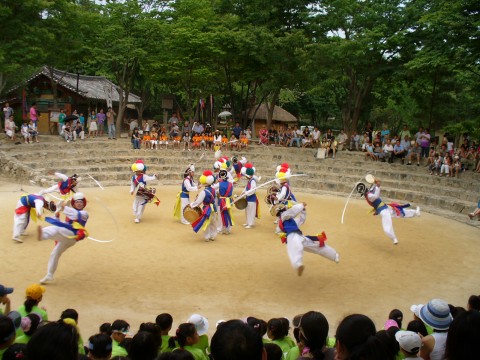History
Culture
Pottery
Traditional Music
Traditional Clothing
Traditional Houses
Traditional Dances
Traditional Painting
Food
Tourism
Merchandises
|
Traditional Music
During the Age of the Three Kingdoms (57 B.C.-A.D. 676) there were significant musical advances on the Korean peninsula including the Goguryeo nation's invention of the 'geomungo' and the Gaya nation's invention of the 'gayageum'. There was also an influx of music culture from China and its bordering countries as a part of the cultural exchange taking place at the time. |
During the Goryeo era, 'aak' and 'hyangak' gained influence- 'aak' being ceremonial court music played during the Jongmyo Shrine's Jerye Ceremony with Chinese roots, and 'hyangak' being the music of Goguryeo, Baekje, and Silla passed down directly to Goryeo. |
In the early/mid Joseon era (1392-1910) court music was in the spotlight, while in later years the focus was on folk music. 'Aak', being court music, was usually played during court ceremonies, and contained lyrics in praise of the king. In the 15th century, the music text 'Akhakgwebeom' was published, detailed music theory, history and instruments. |
In the late Joseon era with the rapid evolution of commerce and industry and the increase in agricultural production levels, common culture began to develop, and music was directly influenced by such changes. In other words, there was an increase in members of society that began to enjoy music, broadening the types of musical genres available. Common culture saw the rise of the 'pansori' opera and folk music. |
Folk music was an honest, frank portrayal of the commoners' feelings and thoughts t the time, and many folk songs were a satire against the inequalities of society. This type of folk music later developed into 'samulnori' (music played on 4 different percussion instruments) and gained wide popularity with the general populace. |
 Nongak perform at Korean Folk Village |
There are over 100 different instruments used in traditional Korean music. These instruments are divided into three different categories depending on how the sound is produced from the instruments:- |
- Hyeonakgi' (Stringed Instruments)
- Gayageum, geomungo, yanggeum, haegeum, ajaeng and etc
|
 Gayageum |
- 'Gwanakgi' (Wind Instruments)
- Daegeum, sogeum, piri, danso, saenghwang, nabal, nagak, tungso and etc
|
 Piri (Wind Instrument) |
- 'Taakgi' (Percussion Instruments)
- Bak, pyeonjong, pyeongyeong, janggu, kkwaenggari, buk and etc
|
 Janggu (Korean traditional hourglass drum) |
|
|
|

